Here are Martin and Bill enjoying the views from its rim.

We spotted a desert lizard:

And drove back to Maadi through the outskirts of Cairo.
 To enjoy refreshments on the roof of Bill and Alison's spacious apartment.
To enjoy refreshments on the roof of Bill and Alison's spacious apartment.
The main purpose of this blog is to keep in touch with friends and family, and maybe entertain others with common interests, particularly in relation to the outdoors. We hope you enjoy it, and your comments are valued....


We spotted a desert lizard:

And drove back to Maadi through the outskirts of Cairo.
 To enjoy refreshments on the roof of Bill and Alison's spacious apartment.
To enjoy refreshments on the roof of Bill and Alison's spacious apartment.
 We thoroughly enjoyed our day here, which included a visit to the Imhotep Museum, and some interesting roads to the Dahshur Pyramids - the Red Pyramid and the Bent Pyramid (pictured below).
We thoroughly enjoyed our day here, which included a visit to the Imhotep Museum, and some interesting roads to the Dahshur Pyramids - the Red Pyramid and the Bent Pyramid (pictured below). Bill was the ideal host, and Sarah an excellent companion for Sue and me.
Bill was the ideal host, and Sarah an excellent companion for Sue and me. Our genial host is now about to whisk us off to a party, so that's all for now...
Our genial host is now about to whisk us off to a party, so that's all for now...In the company of a man with his beard tucked around his ears, we shuttled off from Manchester's T3 to reach this brand new emporium - T5 at Heathrow.
The flight to Cairo was my first in a 747 (Jumbo) - it was delayed for an hour whilst two cats were removed from the hold because the heating had broken.
The wide luminous ribbon of the M25 belied the fact of a grey day in the UK. We were pleased not to have even thought about packing waterproofs for this 10 day trip - undertaken on the pretence of attending Selwa and Amro's wedding in Alexandria.
It was clear over the Alps, but after a spattering of lights as we passed over the Inn Valley, there wasn't much sign of life in the mountains.
The sparsely lit Adriatic coast was followed by a series of spindly roads leading to Athens, and then we were over Cairo, at midnight. Thursday night is their equivalent of Friday, and the huge city looked very busy below us.
BP's welcoming system efficiently 'immigrated' us, and with our 'hand luggage only' policy for this trip we soon sped through to a waiting car and the journey to Maadi, an affluent suburb to the south of Cairo, where Bill and Alison rent a spacious villa. It was 1.30 am, but Bill was up to greet us and show us around before we finally flaked out in the luxurious surroundings.
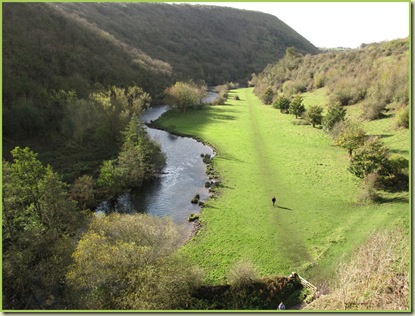 View of the Wye Valley from Monsal Viaduct
View of the Wye Valley from Monsal Viaduct
Mark (Beating the Bounds) comments:
"Ruskin allegedly said that the view of the Lune valley from the churchyard in Kirkby Lonsdale was the finest in the world, but had he been to Monsal Head?"
I'm afraid he had been to Monsal Head, Mark. And he thought very highly of it. Until the railway came. This is what he said:
"You think it a great triumph to make the sun draw brown landscapes for you. That was also a discovery, and some day may be needful. But the sun had drawn landscapes before for you, not in brown but in green and blue and all imaginable colours, here in England. Not one of you ever looked at them, not one of you cares for the loss of them when you have shut the sun out with smoke so that he can draw nothing more, except brown blots through a hole in a box. There was a rocky valley between Buxton and Bakewell, once upon a time as divine as the Vale of Tempe; you might have seen the Gods there morning and evening - Apollo and all the sweet muses of the light - walking in fair procession on the lawns of it, and to and fro among the pinnacles of its crags. You cared neither for Gods nor cash (which you did not know the way to get) you thought you could get it by what the Times calls 'Railway Enterprise'. You enterprised a railroad through the valley - you blasted its rocks away, heaped thousands of tons of shale into its lovely stream. The valley is gone and the Gods with it, and now every fool in Buxton can be at Bakewell in half an hour and every fool in Bakewell at Buxton; which you think a lucrative process of exchange - you fools everywhere."
I'm glad I photographed that information board! I enjoyed transcribing it. There's food for thought, perhaps, with some present day analogies. It has to be said that time has largely healed the scars of the railroad, apart from the impressive viaduct.
Our next series of postings will be a mixture of 'Blackberries' and remote computer transmissions when we have access to them, so there won't be many images for ten days or so. But there will be a new 'label', and perhaps, temporarily, a few different readers / viewers. So we welcome any newcomers and hope we will be able to transmit on the 'big day' (Monday).
Before we go, we would wish Phil at Doodlecat our very best wishes and hope his imminent traumatic experience will cure his ailment, and we wish all those in the TGO Challenge hat at the weekend every success in being pulled out of that hat. We are also conscious of a number of other people who are currently hampered by health and other issues, and we wish you well. Finally, we trust Gayle and Mick will make it safely to Fort William - well done in anticipation.
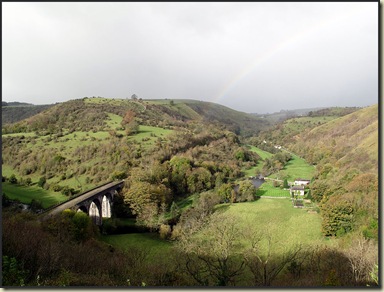 Having got my new boots, a short stroll from Monsal Head to break them in was in order. The view above greeted me.
Having got my new boots, a short stroll from Monsal Head to break them in was in order. The view above greeted me.
Turning left down the Monsal Dale path, I soon reached the weir - a roaring torrent - no paddling across here today. Then over the narrow bridge and into the autumn sun, where leaves, like these Norway Maple (?) in Little Longstone, were nicely illuminated. 
Back up in Little Longstone, this 'phone box and the village pump next to it had also caught my eye.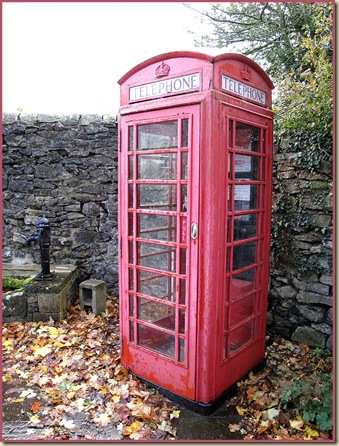
The path follows the right (north) bank of the River Wye and rises to the Monsal Viaduct, from where the disused railway line disappears into a tunnel. A short climb leads back to Monsal Head, and the Hotel, which I took the opportunity to book for a Christmas Walk lunch on 14 December, to which everyone is hereby invited.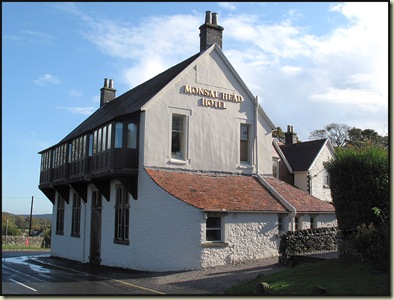
A slideshow of today's images (only 18) is here. No prizes for spotting the 'odd one out'!
And the chance encounter - as I set off towards the Dale I noticed a (proper) photographer setting up his tripod and huge large format camera. He was packing up when I returned half an hour later, and we chatted briefly before seeking refuge from a shower in our respective cars with our lunch boxes. This was Andrew, who is trying to make an income out of being a photographer. Have a look at his website. I wish you every success, Andrew; it was good to talk, and I think your picture galleries are great.
Those of you who follow these ramblings may recall two previous entries about these boots. On 3/10/07 and on 19/6/08, when I purchased a new pair to take to the Alps. Those who read the missives from the IBR (Italian Border Route) will know that the new Fugitive foots leaked from the outset. Luckily we only had 4 hours of rain (on the trail, that is) in two months of walking, so it didn't really matter.
[See below for digression.]
Anyway, on return the rather battered boots went back to Outside and they sent them to Asolo's UK people in Preston.
And yesterday I went back to Outside to collect my refund, replacements, or alternative boots. Yes, the Asolo people had done the honourable thing and admitted that there was a manufacturing fault with the boots I bought in June.
So I tried on some Aku boots (very light, but perhaps not as robust as the Fugitives, and rather too much arch support for me) and some Scarpas (nice and solid but a bit too roomy around the toes).
The Asolos, as usual, fitted perfectly, so I now have my third pair of Fugitive GTX boots. It was raining, so Mike at Outside gave them a quick spray and I wore the boots for the rest of the day. I felt like a stroll so went up to Monsal Head (see next posting). I needed to get home fairly early as Mrs B needed her car, but I did manage to break in the boots. They rubbed one of my ankles for the first kilometre, but were fine after that, and will be from now on. When I arrived home after an hour's drive I stooped to take off my trainers and found this view:
Will they last? I don't know.
Will they be comfy? Yes.
And I can always use Sealskinz to keep my feet dry. I'm not worried about the goretex liner, either - my feet obviously don't sweat as much as those of some of our esteemed gear reviewers.
A digression: Despite what Jim Perrin would have you believe:
'....This miserable summer, its sodden presence imposed over most of Europe....' he writes in the newly vamped TGO magazine, we really did spend over 400 hours exposed to the elements during our walk from Menton to Saas Fee, out of which it rained for 4 hours - that's half a day's rain in two months. Alright, we did observe rain from our tent and other shelters, but it was actually a magnificent summer where we were in the high Alps. I know Jim is unwell, and I have every sympathy for him in that respect, but why did he have to be untruthfully negative just to provide the headline that enabled him to write about 'rainy day pleasures'? Surely he could have approached the topic from a more positive stance?
And the new TGO magazine? We'll see how it goes, the first issue after a revamp is always going to be a 'flagship' effort. But I particularly enjoyed new writer Jamie Whittle's piece on Wilderness.
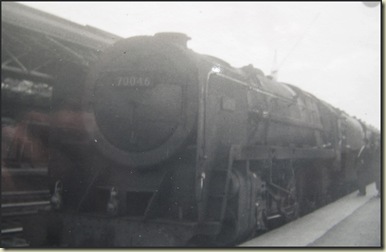
The other day my exercise on the bike was interrupted by Marian.
Marian lives in the old signalman's cottage at the Altrincham end of the disused railway that now forms part of the Trans-Pennine Trail for cyclists. The section by her cottage is currently closed for resurfacing. Marian joined me as I pondered the 'Path Closed' sign, and she volunteered an impromptu life story. It's nice to have time for things like this. She has lived in the 1-up, 1-down cottage (now extended a bit) for 54 years, during most of which time the railway operated. The line closed in 1985, some 4 years after the death of her husband, who I assume was the signalman. I suspect it was used for goods traffic only in its latter years - I don't recall using it to go from Manchester to Warrington in my early days of work before I had a car.
We bemoaned the fact that following closure the ballast had been removed; it's now needed for the cycle track.
Things have changed a bit during Marian's tenure at this place, but the same issues recur - hedge cutting, warnings of the dangerous bend in the road, potholes, the positioning of her driveway, her children (adults now with their own families, but still 'children' to Marian), worries about folk using the closed path, etc, etc.
A pleasant few minutes with a nice old lady - I tried hard to put a positive skew onto some of her worries.
The photo was taken with a box camera in 1960 at Stafford station. My old photo album has it captioned as 'Lord Kitchener' but this is actually 'Anzac', a Britannia Pacific class 4-6-2 engine built in the 1950's - one of the last steam engines to be built in Britain - at Crewe, I think.
There are some more fascinating facts here.
I remember taking the photo, but not in my wildest dreams did I imagine that one day I would be able to show it to the world at the click of a button!

Frogfish